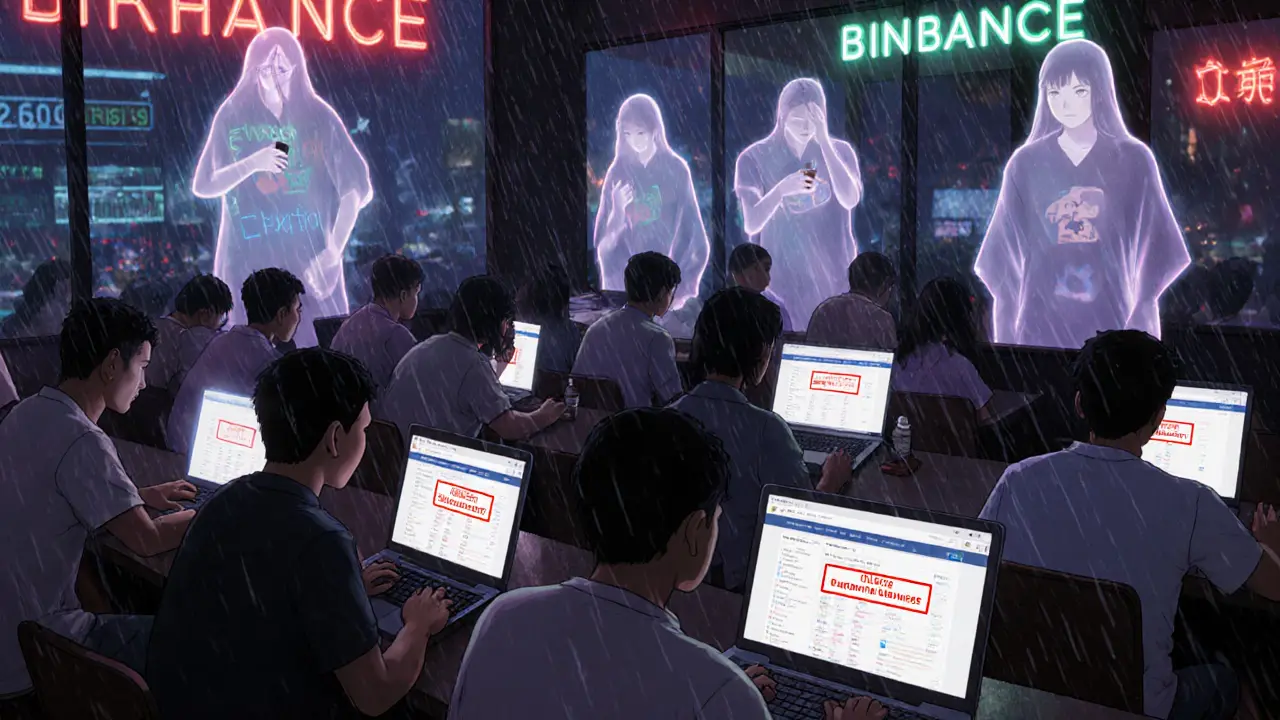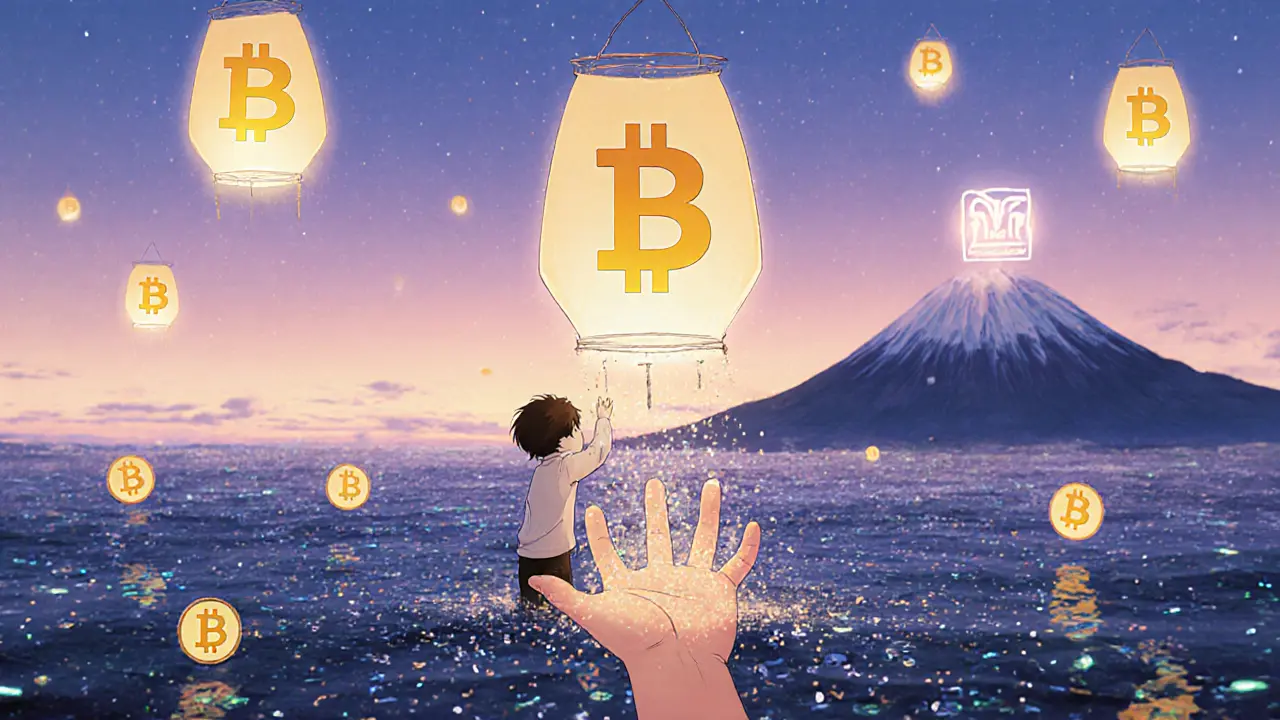Crypto Asset Recovery Estimator
Based on the Philippines' $150 million crypto freeze and recovery process data:
- Stablecoins (USDT/USDC) 68%
- Bitcoin 22%
- Altcoins 10%
Estimated recovery rate:
0.00%
Estimated amount recoverable:
$0.00
Note: This is an estimate based on article data. Actual recovery depends on:
- Completing the SEC's recovery process
- Documenting ownership and source of funds
- Platform licensing status
What You Need to Know
Only 12% of affected users completed the recovery process as of July 2025. Your recovery depends on:
- Proving ownership with blockchain transaction records
- Submitting ID and address verification
- Confirming funds weren't from illegal activity
On a quiet Tuesday in May 2025, thousands of Filipino crypto users woke up to find their funds gone-not stolen, not lost, but frozen. The Securities and Exchange Commission (SEC) of the Philippines had acted against 20 unlicensed cryptocurrency exchanges, locking down $150 million in digital assets. For many, it wasn’t just money stuck in limbo-it was rent money, school fees, emergency savings. And there was no warning. No email. No phone call. Just a blocked website and a silent wallet.
What Exactly Got Frozen?
The $150 million wasn’t random. It came from platforms that were openly offering crypto trading, staking, and lending to Filipinos without any legal permission. These weren’t offshore shell companies hiding in tax havens. These were apps with Filipino customer support, Tagalog interfaces, and local bank integrations. Platforms like Bitget PH, Binance PH, and several smaller local exchanges had built user bases in the millions, relying on the country’s high crypto adoption rate to grow fast-and quietly. The SEC didn’t target Bitcoin or Ethereum itself. It targeted the services that handled them. Under new rules issued in January 2025, any company offering crypto trading, custody, or exchange services in the Philippines had to register as a Crypto-Asset Service Provider (CASP). That meant background checks, financial disclosures, anti-money laundering protocols, and customer fund segregation. Most of the blacklisted platforms never applied. Others applied too late. And when the deadline passed, the SEC moved. The frozen assets broke down like this:- 68% in stablecoins-mostly USDT and USDC
- 22% in Bitcoin
- 10% in altcoins like Solana, Dogecoin, and Shiba Inu
Why Now? The Three-Year Moratorium That Changed Everything
This crackdown didn’t come out of nowhere. For three years, from September 2022 to September 2025, the Bangko Sentral ng Pilipinas (BSP) had put a hold on issuing licenses to Virtual Asset Service Providers. The idea? Give regulators time to figure out how to handle crypto without killing innovation. But while the BSP paused, the market exploded. By early 2025, Filipinos had invested over ₱6 trillion (about $107 billion) in digital assets. Coins.ph alone had over 20 million users. Most of them didn’t care about licenses. They cared about earning interest on their crypto, sending money to family abroad, or buying Bitcoin with GCash. The unlicensed platforms filled that gap perfectly. But as the September 2025 license expiration date neared, regulators realized they were sitting on a ticking bomb. With no oversight, reports of fraud, Ponzi schemes, and money laundering were rising. Chainalysis estimated that $2.17 billion in crypto had been stolen globally in the first half of 2025-and the Philippines was becoming a hotspot. So the SEC acted before the BSP reopened licensing. This wasn’t just enforcement. It was a cleanup before the gates opened.
Who Got Hurt? The Real People Behind the Numbers
The $150 million sounds like a statistic. But behind it are real stories. A 67-year-old grandmother in Cebu had $8,000 in USDT she earned from selling handmade crafts online. She used a local exchange because it was easy-no KYC, instant cash-outs to her bank. When the site went dark, she didn’t know what to do. She couldn’t access her wallet. She didn’t understand blockchain. She didn’t know what a transaction hash was. On Reddit’s r/PhilippinesCrypto, a thread titled “My $15k frozen in Bitget PH-What now?” had over 1,200 upvotes and 387 comments. Most replies were variations of the same thing: “I thought it was safe.” “I followed their instructions.” “I had no idea they weren’t licensed.” The Philippine Consumer Welfare Association logged 3,215 formal complaints between January and June 2025. Average loss per person? $4,670. For many, that’s more than a year’s salary. Even those who supported the crackdown admitted the process was brutal. A survey by the Association of Cryptocurrency Enthusiasts of the Philippines found that 78% of users didn’t know about the licensing rules. The SEC had published guidelines, sure-but they were buried in legal jargon on a government website no one visited.The Recovery Process: Why It’s So Hard to Get Your Money Back
The SEC set up the Crypto Asset Recovery Unit (CARU) to handle claims. Sounds good, right? Here’s how it actually works:- You must prove you owned the funds with blockchain transaction records
- You must show your ID and proof of address
- You must swear your funds weren’t from illegal activity
- You must submit everything through a government portal that crashes often

What’s Next? The Road to Licensing and What It Means for You
On September 1, 2025, the BSP’s three-year license moratorium officially ended. On September 15, the first round of CASP applications opened. Only 10 platforms were selected for a “Regulatory Sandbox”-a trial period where they operate under close watch while the full rules are finalized. Coins.ph, PDAX, and Binance Philippines (after reapplying) were among the first to get approval. Others are still waiting. The SEC says it will start releasing verified funds on November 1, 2025-but only if you’ve completed the process and your case is clean. Here’s what this means for users:- Only use platforms with SEC registration. Look for the official CASP logo.
- Never keep large amounts on exchange wallets. Use your own hardware or software wallet.
- Save every transaction ID, wallet address, and receipt-even if the platform says “don’t worry.”
- Don’t trust “guaranteed returns.” If it sounds too good to be true, it is.
What You Can Do Today
If your crypto is frozen:- Go to the SEC’s official Crypto Asset Recovery Portal (sec.gov.ph/caru)
- Collect all transaction records from your wallet or exchange history
- Prepare your government-issued ID and proof of address
- Submit your claim and track status online
- Join the official SEC Telegram group for updates (search: SEC CARU Updates)
- Check the SEC’s current list of licensed CASPs before depositing funds
- Use only platforms that require KYC-legitimate ones will ask for it
- Never send crypto to a wallet address someone gives you over Facebook or WhatsApp
Why were crypto assets frozen in the Philippines?
The Philippine Securities and Exchange Commission (SEC) froze $150 million in crypto assets in 2025 because 20 exchanges were operating without proper licenses. Under new rules issued in January 2025, all crypto service providers had to register as Crypto-Asset Service Providers (CASP). The unlicensed platforms failed to meet requirements like customer fund segregation, anti-money laundering checks, and investor disclosures.
How much crypto was frozen, and what types of assets were affected?
A total of $150 million in crypto assets were frozen. The majority-68%-were stablecoins like USDT and USDC. Bitcoin made up 22%, and altcoins like Solana and Dogecoin accounted for the remaining 10%. Most of the funds were held on Ethereum (45%), Binance Smart Chain (30%), and Tron (15%).
Can I get my frozen crypto back?
Yes, but only if you complete the SEC’s Crypto Asset Recovery Unit (CARU) process. You need to prove ownership with blockchain transaction records, submit your ID and proof of address, and declare that your funds weren’t from illegal activity. As of July 2025, only 12% of affected users completed the process. Applications are still open, and partial fund releases began on November 1, 2025.
What platforms are now licensed in the Philippines?
As of September 2025, the first licensed Crypto-Asset Service Providers (CASP) include Coins.ph, PDAX, and Binance Philippines after reapplying. Ten platforms were approved for a Regulatory Sandbox trial. The full list of licensed CASPs is published on the SEC website and updated regularly. Only use platforms on this official list.
How can I avoid having my crypto frozen in the future?
Always use SEC-licensed platforms-check their official CASP list before depositing. Never keep large amounts in exchange wallets; use your own hardware or software wallet. Save all transaction IDs and receipts. Avoid platforms offering guaranteed high returns, and never share your private keys. If a platform doesn’t require KYC, it’s likely unlicensed and risky.


Shanell Nelly
November 14, 2025 AT 12:30Wow, this is such an important wake-up call for crypto users everywhere. I’m from the US but I’ve got friends in the Philippines who got hit hard - one even had to delay her mom’s surgery because her emergency fund was frozen. The SEC didn’t go too far; they were late, sure, but better late than never when scams were running wild. Seriously, if you’re staking on some app that says ‘no KYC’ and gives 20% APY, run. Not walk. Run.
And please, PLEASE start using your own wallet. Exchange wallets are like leaving your keys in the ignition. I’ve been telling my cousins this for years. Save your tx hashes. Take screenshots. Write down addresses. It’s not techy - it’s basic life skills now.